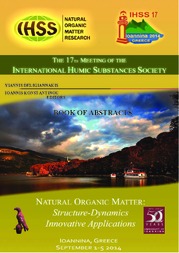Molecular characteristics and bioactivity of humic acids isolated from vermicomposts.
Molecular characteristics and bioactivity of humic acids isolated from vermicomposts.
Author(s): MARTINEZ-BALMORI, D.; SPACCINI, R.; AGUIAR, N. O.; NOVOTNY, E. H.; OLIVARES, F. L.; CANELLAS, L. P.
Summary: Vermitechnology is an effective composting method which transforms different residual biomasses into nutrient rich organic fertilizer. In fact, the mature vermicompost is a renewed organic source suitable to provide humic substances with high biological activity. The chemical characteristics of humic acids isolated from different vermicomposts, produced with cattle manure, sugarcane bagasse, sunflower cake from seed oil extraction and filter cake from sugarcane factory, were accessed by thermochemolysis and 13C solid state NMR spectroscopy. More than 200 different molecules were found and were possible to identify chemical markers on humic acids according the nature of organic source. The large hydrophobic character of humic extracts and the preservation of altered lignins derivatives confer to HAs the ability to induce lateral root emergence in maize seedlings.
Publication year: 2014
Types of publication: Paper in annals and proceedings
Unit: Embrapa Soils
Keywords: Bioatividade de planta, Vermicomposto, Vermicomposts, Ácido húmico
Observation
Some of Embrapa's publications are published as ePub files. To read them, use or download one of the following free software options to your computer or mobile device. Android: Google Play Books; IOS: iBooks; Windows and Linux: Calibre.
Access other publications
Access the Agricultural Research Database (BDPA) to consult Embrapa's full library collection and records.
Visit Embrapa Bookstore to purchase books and other publications sold by Embrapa.

